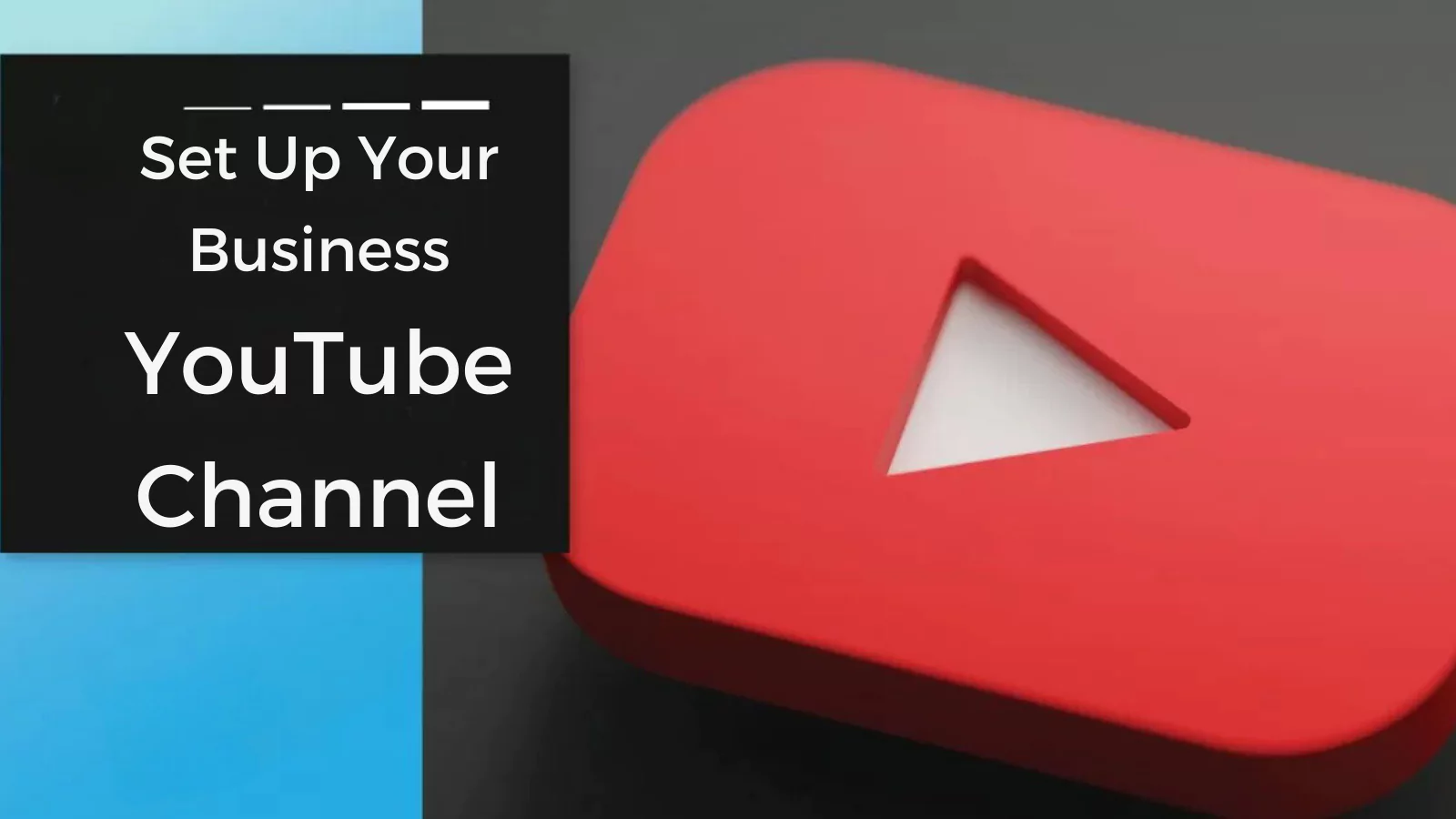With 83% of U.S. adults tuning in daily, YouTube video marketing offers businesses a powerful way to connect with massive audiences. The platform has grown beyond entertainment, becoming a go-to source for insights, recommendations, and inspiration.
However, broadcasting your products without a solid approach won’t get you far. You need a clear strategy beyond just getting views to make an impact in the vast sea of content. So, if you’re ready to make waves with your YouTube marketing in 2025, here are 10 essential steps to help your business reach new heights and transform viewers into loyal fans.
Listen To The Podcast Now!
What Is YouTube Marketing?
YouTube marketing focuses on leveraging the platform’s extensive and dynamic reach to promote your brand, products, or services. This approach can include a wide variety of tactics, such as:
- Creating organic promotional videos that speak directly to your audience
- Partnering with influencers who can expand your reach and enhance your credibility.
- Running targeted ads to attract the interest of potential customers.
Whether you’re a solo entrepreneur or a large corporation, YouTube video marketing can be incredibly powerful, but only if you’re producing content that resonates with your target audience.
It might sound simple: create videos, upload them, and watch your business grow. But here’s the catch, success depends on truly understanding what your audience wants to see, not just what you think they might like (a mistake that too many brands make!).
Additionally, reaching your intended audience on YouTube requires more than just great content; it’s about ensuring that the right people can find it. Since YouTube is the world’s second-largest search engine, content needs to be optimized for YouTube’s algorithm, just as you’d optimize for Google SEO. By aligning your videos with what audiences are searching for, you can ensure your content makes an impact where it matters most.
Why Should Your Business Invest In YouTube Marketing?
In today’s digital landscape, YouTube marketing offers a unique set of advantages that make it a powerful tool for brands. Here are a few key reasons why YouTube deserves your attention:
- Access a Massive Audience. YouTube isn’t just popular—it’s the second-most visited website worldwide. Its billions of users collectively spend about 28 hours each month watching videos, and four out of five internet users have used the platform at some point. This reach gives businesses an enormous opportunity to connect with diverse, engaged audiences.
- Video Content Drives Sales. Video content has proven to be an incredibly effective format for marketers. A recent survey showed that 90% of marketers achieved a positive ROI with video, and 88% noted that video helps audiences understand their products or services better. This visual and dynamic format can simplify complex concepts and create memorable connections with viewers.
- Boost Visibility in Search Results. YouTube videos aren’t just limited to the platform itself—they also have the potential to show up in Google search results. By optimizing your videos for YouTube SEO and keeping an eye on Google’s algorithms, you can increase your reach even further and bring more eyes to your content.
- Tap into YouTube’s Monetization Options. As your channel grows, YouTube opens up more monetization opportunities. Beyond your main business goals, you can also earn revenue through ads placed on your videos, offering an additional income stream once you’ve built a loyal viewership.
So, without further delay, here are the essential steps to help you effectively promote your business on YouTube in 2025!
9 Essential Steps For Building A Successful YouTube Marketing Strategy
Are you ready to take your business’s YouTube journey to the next level? Follow these 9 actionable steps to create an effective YouTube marketing strategy that promotes your products and services while growing your audience.
Step 1: Set Up Your Business’s YouTube Channel
The first step in a successful YouTube video marketing strategy is setting up a dedicated YouTube channel for your business. You’ll need a Google account to begin, which can be an existing one or a new one created solely for your business channel.
Here’s how to get started:
- Create a Google Account (or use your existing one).
- Visit YouTube, click on the profile icon, and select “Create a Channel.”
- Enter your business name, and handle, and upload your logo as your profile picture.
- Click “Create Channel” to finalize the process.
Once your channel is created, customize it to make it unique and engaging. Here are the key details to complete:
- Basic Info: Include your channel name, description, website and social media links, and contact information.
- Branding: Use your business logo as the profile picture and choose a banner that represents your brand.
- Layout: Select a featured video to welcome new visitors and organize your content into sections for easier navigation.
Now your channel is set to create engaging content and attract your audience!
Step 2: Understand What Your Audience Wants
To effectively reach your audience, you need to understand their preferences. Ask yourself:
- Who are you creating videos for?
- What types of videos do they already watch on YouTube?
Start by researching basic YouTube demographics. As of January
2024, YouTube users are mostly aged between 18 and 49, with a balanced gender distribution. YouTube also has a global reach, so whether your market is local or international, there’s great growth potential.
If you already have a channel, use YouTube Analytics to gain insights into your audience’s demographics, interests, and viewing patterns. This data will help you tailor your content to meet their needs.
Additionally, tools like Socinator can be valuable for expanding your audience research. With its ability to manage social accounts and analyze performance, you can identify trends, monitor engagement, and find new content opportunities. This helps you stay focused on creating videos that your target audience will love.
By staying attuned to what your audience is interested in, you can tailor your videos to what they want to see, giving your YouTube video marketing strategy the boost it needs.
Try Now
Socinator: The Social Dominator
 Socinator is a powerful social media automation tool designed to help brands maximize their YouTube strategy efficiently. Managing a YouTube channel can be time-consuming, but Socinator simplifies the process with powerful automation features that boost your channel’s performance.
Socinator is a powerful social media automation tool designed to help brands maximize their YouTube strategy efficiently. Managing a YouTube channel can be time-consuming, but Socinator simplifies the process with powerful automation features that boost your channel’s performance.
- YouTube Auto Post for Videos: Schedule and automate video uploads to ensure consistent posting without manual effort. Stay on track with regular content updates and keep your audience engaged.
- Auto Like + View Videos: Increase engagement by automatically boosting likes and views on your videos. Set your preferences, and let Socinator enhance your video’s performance effortlessly.
- Activity Reports and Analytics: Access detailed reports to track your channel’s performance. Monitor key metrics to refine your strategy and understand what’s driving success.
- Auto Subscribes: Grow your subscriber base with automated subscription links, making it easy to expand your audience with minimal effort.
- Video Sharing Analytics: Gain insights into how your shared videos perform across different platforms. Socinator tracks your content’s reach and engagement, helping you identify what works and optimize your strategy.
- Cross-Platform Engagement: Engage with audiences not just on YouTube, but across other social media platforms as well. Socinator automates interactions like liking,
commenting, and following across YouTube, Instagram, Twitter, and more.
With Socinator, you can automate key tasks, track performance, and focus on content creation, all while improving your engagement and monetization opportunities.
Get Started
Step 3: Research Your Competition
Competitor analysis is a valuable tool for refining your YouTube strategy. Here’s how to analyze your competition:
- Identify Competitors: Find YouTube channels in your niche with similar audiences.
- Evaluate Key Metrics: Look at subscriber counts, views, posting frequency, video quality, and audience engagement.
- Study Content Topics: Identify which topics resonate most with their audience and adapt those ideas to fit your brand.
You can further track progress by organizing competitor data and performing a SWOT analysis to identify strengths and weaknesses.
Step 4: Study Your Favorite YouTube Channels
In addition to analyzing competitors, take time to learn from your favorite YouTube channels, whether they’re in your industry or not. Observing successful creators, even outside your YouTube automation niche, offers valuable insights into what works on YouTube.
Here’s what to look for when studying these channels:
- Video Thumbnails: Pay attention to the designs and visuals used to make thumbnails stand out.
- Channel Art: Notice how creators brand their channels with banners and profile images.
- Links to Posts or Products: Observe how creators use links in their descriptions or videos to direct viewers to other content or products.
- Video Editing Style: Study the editing techniques, including text popups, transitions, and special effects, that make the videos engaging.
One important takeaway: audio quality often outweighs video quality. Despite having high-quality visuals, poor audio can cause viewers to lose interest.
By consuming diverse content, you’ll better understand trends and best practices, helping you refine your approach and create more appealing videos.
Step 5: Plan And Create Your Content
 Now that your YouTube channel is set up and you’ve learned what works for others, it’s time to create your content plan.
Now that your YouTube channel is set up and you’ve learned what works for others, it’s time to create your content plan.
When planning your content for YouTube video marketing, focus on delivering value to your audience by answering common questions or addressing current trends.
Start by gathering ideas. You can draw inspiration from:
- Audience Questions: What are your viewers curious about? Answer their most common questions.
- Industry Trends: Stay on top of the latest trends in your niche and create content around them.
- Popular Competitor Videos: See what your competitors are doing well and create your take on similar topics.
- Video Idea Lists: Refer to lists of popular YouTube video ideas for inspiration.
- Experimental Content: Don’t be afraid to try out new concepts and see how they perform.
Begin by compiling a list of 10 video ideas. While you can adjust your upload frequency later, launching your channel with multiple videos is a great way to build momentum from the start.
Next, create a content production strategy. Break it down into key tasks:
- Recording: Plan your content and get filming.
- Editing: Refine your videos to make them captivating and professional.
- Uploading: Once the video is ready, upload it to YouTube.
- Optimization: Optimize your videos for SEO (we’ll cover this in the next step).
- Scheduling: Plan when to release your videos, whether it’s weekly or biweekly.
- Promotion: Share your videos on social media and other platforms to drive traffic.
Once you’ve uploaded your initial batch of videos, establish a consistent schedule that you can maintain—whether it’s weekly or biweekly—to ensure steady channel growth.
Step 6: Optimize Your Videos For More Views
 With over 2 billion users on YouTube, optimization is essential for standing out. Here’s how to ensure your videos are discoverable:
With over 2 billion users on YouTube, optimization is essential for standing out. Here’s how to ensure your videos are discoverable:
- Conduct Keyword Research: Use tools like Google Keyword Planner or YouTube search to identify popular keywords.
- Use Keywords Wisely: Add keywords to your video title, description, tags, and hashtags.
- Add Timestamps: Break your video into chapters to encourage longer viewing times.
- Write a Detailed Description: Include a video summary, timestamps, links, a call to action, and relevant hashtags.
- Design Custom Thumbnails: Create engaging, high-quality thumbnails to grab attention.
- Engage with Comments: Respond to comments to build a community and increase interaction.
By following these optimization strategies, your videos will have a higher chance of appearing in YouTube search results and recommendations, leading to more views.
Step 7: Youtube Video Marketing To Attract Subscribers
 Once your videos are ready, promote your YouTube channel to gain subscribers and expand your audience.
Once your videos are ready, promote your YouTube channel to gain subscribers and expand your audience.
- Leverage Your Website and Email
Add a YouTube link to your website and email newsletters. Embed videos in blog posts or landing pages to drive traffic.
- Cross-Promote on Social Media
Share your videos across all social platforms. Post links to new videos and playlists to boost visibility and engagement.
- Collaborate with Other Creators
Partner with YouTubers or brands to cross-promote. Collaborating on content or giving shout-outs can help introduce your channel to new audiences.
- Join Online Communities
Share videos in relevant online forums or groups, like Reddit or Facebook, to reach new viewers interested in your content.
- Be Consistent
Regular uploads of high-quality content will keep current subscribers engaged and attract new ones.
By promoting your channel across multiple platforms and staying consistent, your subscriber count will steadily grow.
Step 8: Collaborate With YouTube Creators
 Collaborating with influencers or other YouTube creators is an effective way to expand your audience. Ensure you’re clear on your goals and follow FTC guidelines regarding sponsored content. Here’s how to maximize collaboration:
Collaborating with influencers or other YouTube creators is an effective way to expand your audience. Ensure you’re clear on your goals and follow FTC guidelines regarding sponsored content. Here’s how to maximize collaboration:
- Select the Right Influencers: Choose influencers who align with your brand and have a strong connection with your audience.
- Evaluate the Results: After each campaign, review metrics to refine future collaborations.
Types of influencer videos include:
- Unboxing Videos: Influencers showcase your products.
- Tutorials: Demonstrate how to use your products.
- Product Reviews: Build trust by offering honest opinions.
- Sponsored Videos: A full video dedicated to showcasing your brand.
Influencer marketing can significantly boost your visibility on YouTube.
Also Read:
15 Best YouTube Video Ideas To Gain More Views
How To Increase YouTube Engagement Rate: 7 Ways That Work
Streamline Video Advertising Using The Best YouTube Marketing Software
Step 9: Analyze And Adapt
 Regularly analyzing your YouTube video marketing performance through YouTube Analytics helps you understand which content resonates best with your audience. Use YouTube’s built-in reports to monitor key metrics such as audience engagement, traffic sources, and top-performing videos.
Regularly analyzing your YouTube video marketing performance through YouTube Analytics helps you understand which content resonates best with your audience. Use YouTube’s built-in reports to monitor key metrics such as audience engagement, traffic sources, and top-performing videos.
Focus on tracking the following monthly:
- Subscribers
- Views
- Watch Time
- Top Videos
- Impressions
- Click-Through Rate (CTR)
These metrics help you gauge your channel’s growth and identify areas for improvement. If you notice your numbers aren’t increasing, it’s time to adjust your YouTube video marketing strategy accordingly.
Conclusion
YouTube offers unparalleled opportunities for businesses to grow their online presence, engage with a massive audience, and drive conversions. By following the steps outlined in this post, you can build an effective YouTube video marketing strategy that will help your business grow and succeed in 2025. Remember, consistency, creativity, and strategy are key to standing out in a crowded platform.
To streamline your YouTube video marketing efforts, tools like Socinator can be incredibly helpful. With features such as automated video posting, auto engagement, and in-depth analytics, Socinator helps you save time and maximize your channel’s potential. As you continue to refine your YouTube strategy, using tools like Socinator can give you a competitive edge, enabling you to grow your brand and connect with your audience more effectively. Feel free to check it out.
FAQ
What are YouTube video marketing services?
YouTube video marketing services help businesses promote their videos through targeted strategies, including video optimization, audience engagement, and content creation, to drive views and subscriptions.
How can a YouTube marketing agency help my business?
A YouTube marketing agency specializes in developing and executing strategies to grow your channel, increase video engagement, and boost visibility, ensuring that your content reaches the right audience.
How does YouTube promote a video?
YouTube promotes a video through its algorithm, which recommends videos based on viewers’ interests, watch history, and engagement. Proper video optimization and consistent content creation can improve your chances of being featured in recommendations.
What is a YouTube automation tool and how can it help?
A YouTube automation tool simplifies tasks like scheduling uploads, boosting engagement, and tracking performance, saving time and ensuring consistent growth for your channel.











